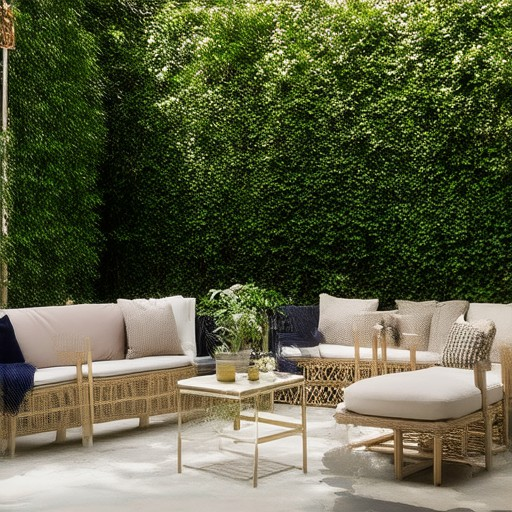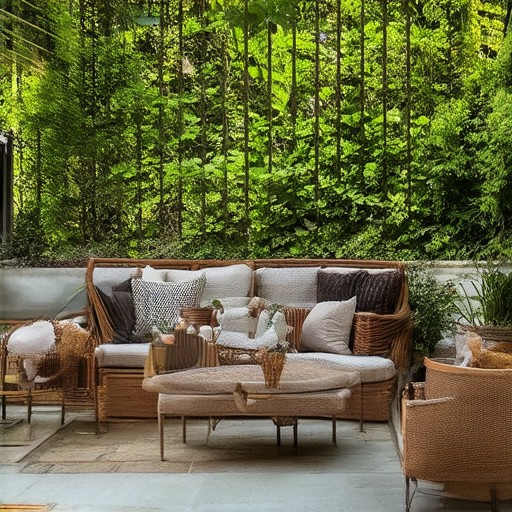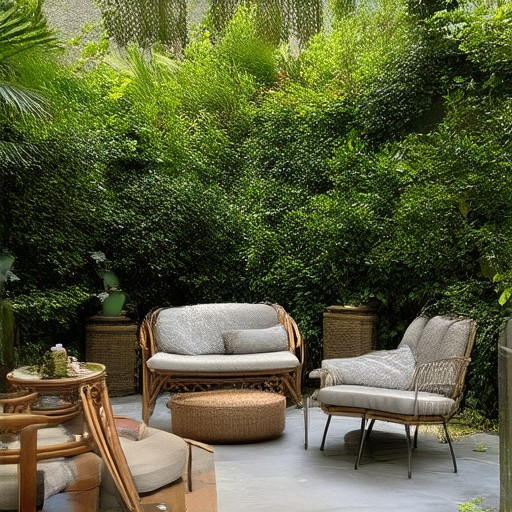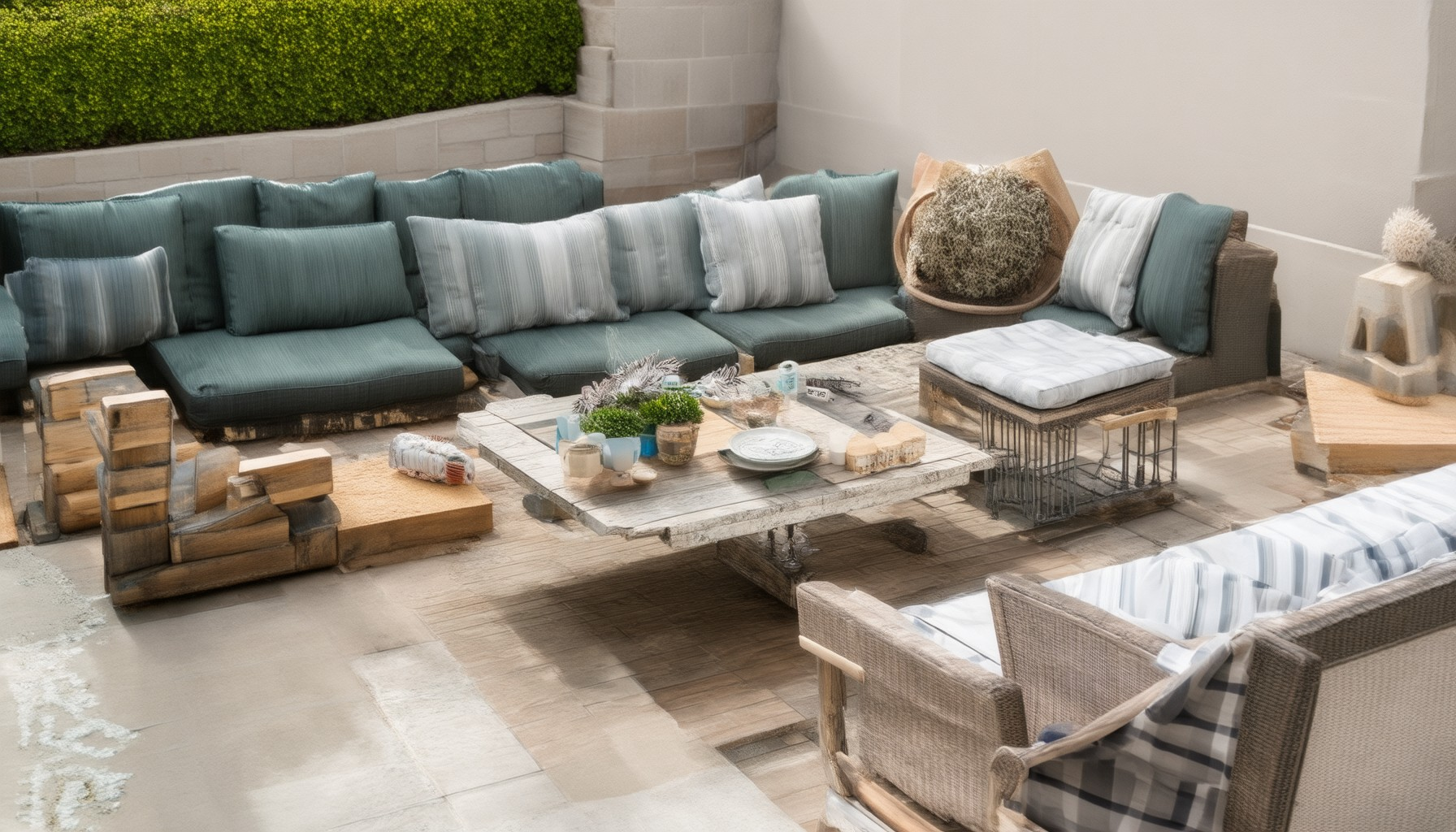Creating an inviting outdoor space doesn’t have to break the bank. With a bit of creativity and some DIY skills, you can transform your backyard, patio, or garden into a cozy and stylish outdoor seating area. Whether you’re looking for affordable outdoor furniture ideas, unique bench designs, or ways to maximize space with compact seating arrangements, this guide has got you covered. From simple wood outdoor benches to more elaborate fire pit seating areas, we’ll explore a variety of options that cater to every taste and budget. Discover how to build outdoor seating areas that are not only functional but also aesthetically pleasing, blending seamlessly with your existing landscape. Let’s get started on transforming your outdoor space into a retreat you’ll never want to leave!
Key Takeaways
- Optimize Comfort with Recommended Heights: Achieve ergonomic benefits with outdoor seating heights between 16-19 inches for enhanced posture and reduced strain.
- Plan Thoughtfully for Functionality and Aesthetics: Create a spacious and proportional outdoor seating area by considering factors like number of seats, spacing, and layout.
- Select Seat Height Based on Use: Choose heights suited for specific purposes, such as 30-34 inches for dining or 24-26 inches for office settings.
- Ensure Ergonomic Design for Long-Term Comfort: Customize seat heights for personalized comfort and support during extended use.
- Minimize Strain with Proper Posture and Alignment: Prioritize seating arrangements that promote correct posture to enhance overall well-being.

Is It Cheaper to Build Your Own Patio Furniture?
Yes, building your own patio furniture is often cheaper than purchasing pre-made options. However, the cost savings depend on several factors, including materials, labor, and design preferences.
Factors Influencing Cost
- Material Costs: The type of material significantly impacts the overall cost. Wood, concrete, and composite decking are popular choices, each with varying price points.DIYers can often source materials at lower prices compared to retail stores.
- Labor Costs: If you’re building the patio yourself, you save on labor costs. Hiring a professional can increase expenses, though they may offer better quality workmanship and time efficiency.
- Time and Effort: While cheaper, building your own patio requires time, tools, and knowledge. If you prefer convenience, hiring a contractor might be worth the extra cost.
- Design Flexibility: Customization is a major advantage. You can create a patio that perfectly matches your outdoor space and personal style.
- Tools and Equipment: You’ll need basic tools like a saw, drill, and measuring tape. Investing in these can be costly but are essential for a successful DIY project.
Benefits of Building Your Own Patio Furniture
- Cost Savings: DIY patio furniture can save you up to 70-90% compared to store-bought options, depending on the complexity of the design.
- Customization: Tailor the design to your specific needs and preferences, ensuring it fits seamlessly with your outdoor decor.
- Sustainability: Reusing or repurposing materials can reduce waste and environmental impact.
- Increased Value: A well-designed patio can enhance your home’s curb appeal and potentially increase its resale value.
Considerations Before Building
- Experience Level: If you’re new to woodworking or DIY projects, start with simple designs and seek guidance from tutorials or videos.
- Permits and Zoning: Check local regulations to ensure your patio project complies with neighborhood codes and zoning laws.
- Maintenance: Choose durable materials that require minimal upkeep to save on long-term maintenance costs.
Conclusion
Building your own patio furniture is a cost-effective and rewarding project that allows you to customize your outdoor space. While it may require some initial investment in materials and tools, the savings and personal satisfaction make it a worthwhile endeavor.
For more DIY ideas and expert tips, visit our DIY Projects section. Don’t forget to explore our Home Decor collection for inspiration and guidance.
Common Fabrics Used for Outdoor Seating
Outdoor seating requires durable and weather-resistant materials to ensure longevity and comfort. Two popular types of fabrics commonly used for outdoor seating include mesh and sling fabrics, often made from nylon, polyester, or acrylic.
- Nylon and Polyester Mesh: These fabrics are known for their strength and ability to withstand harsh weather conditions. They are lightweight yet sturdy, making them ideal for patio chairs, hammocks, and other seating arrangements. Mesh fabrics also allow for proper air circulation, keeping the seating area comfortable.
- Sling Fabrics: Sling fabrics are another excellent choice for outdoor seating. They are typically made from high-quality materials like nylon or polyester, offering a relaxed and durable option. Sling seats are often found in commercial settings due to their ease of maintenance and long-lasting durability.
- Canvas: Canvas is a heavy-duty fabric that is highly resistant to fading, tearing, and mildew. It is often used for outdoor cushions and seating because it provides excellent breathability and can be treated with waterproofing agents to protect against rain and moisture.
When choosing the right fabric for your outdoor seating, consider factors like colorfastness, UV resistance, and ease of cleaning. For the best selection of outdoor seating fabrics and accessories, visit our collection at Peck and Gartner .
Additionally, check out our guide on maintaining outdoor fabrics to ensure your investment lasts for years to come.

The Cheapest Way to Build an Outdoor Patio
To create an outdoor patio on a budget, focus on using cost-effective materials and minimizing labor costs. Here’s a step-by-step guide:
- Choose Affordable Materials
- Concrete : Known for its durability and affordability, concrete is a great choice for outdoor patios. It can be poured and shaped to fit your design preferences.
- Pavers : While slightly more expensive than concrete, pavers are a good middle ground between affordability and aesthetic appeal. Look for budget-friendly paver options.
- Decomposed Granite : This material is often used for pathways and can be applied to create a patio surface. It’s cost-effective and easy to install.
- Prepare the Area
- Ensure the ground is level and clear of debris. If you’re unable to prepare the area yourself, consider hiring a landscaping service.
- Install edging (metal or wood) to define the patio’s borders. Wood may be cheaper and easier to install compared to metal.
- Plan the Layout
- Opt for a simple rectangular or square design to minimize costs. Complex shapes or patterns may require more materials and labor.
- Consider the placement of features like a grill or dining area to maximize functionality.
- Install the Patio
- If you’re comfortable with DIY projects, install the chosen material yourself. For better results, hire professionals if you lack experience.
- Seal the Patio
- Apply a sealant to protect the surface from weather damage and extend its lifespan. This step adds to the cost but is essential for longevity.
By selecting affordable materials and possibly handling the installation yourself, you can build an outdoor patio on a budget while maintaining quality and aesthetics.

The Ideal Outdoor Seating Height
The ideal outdoor seating height is generally recommended to be between 16 to 19 inches. This range ensures that your feet can rest flat on the ground while keeping your knees at a comfortable 90-degree angle, preventing strain and promoting proper posture.
For benches, the typical height is around 17 inches, which falls within this range. Bar stools and chairs often have seat heights between 12 to 14 inches, but their overall height (including the backrest) is usually around 30 to 34 inches. However, the seat height itself should still aim to stay within the 16 to 19-inch range for optimal comfort.
Choosing the right height is crucial for ergonomics and comfort, especially when spending extended periods outdoors. A well-supported seating height helps reduce the risk of fatigue and injuries associated with poor posture.
How Big Should Your Outdoor Seating Area Be?
Determining the appropriate size for your outdoor seating area involves several factors, including functionality, aesthetics, and practicality. Here’s a breakdown to help you decide:
- Number of Seats: Consider how many people will typically use the area. For personal use, aim for about 10-15 seats. For commercial purposes, plan for more depending on foot traffic.
- Spacing Requirements: Allow at least 2 feet between each seat for comfort and movement. Add an extra 1-2 feet for pathways and table placement.
- Table Arrangements: If including tables, ensure there’s enough space for them and at least 2 feet clearance around them for easy access.
- Layout Shape: A circular arrangement often maximizes space efficiency compared to a rectangular one. However, choose based on your available land and desired aesthetic.
- Proportion with Surroundings: Ensure the size complements your home or property. A small area works well with a modest-sized house, while a larger area should match a bigger property scale.
- Additional Features: Incorporate storage solutions, lighting, and planters to enhance functionality and visual appeal.
- Lighting and Accessories: Plan for adequate lighting to extend use into the evenings and consider decorative elements that tie the space together.
By evaluating these elements, you can create a seating area that feels spacious yet proportionate to your needs and surroundings.

How High Off the Ground Should a Seat Be?
The ideal height for a seat depends on its intended use and the comfort preferences of the user. Here are the key considerations:
General Guidelines
- For most seating arrangements, a seat height of 16–18 inches is recommended. This allows individuals to sit with their feet flat on the floor, achieving a slight forward tilt and maintaining proper posture.
- A knee angle of 90–100 degrees is optimal, as this promotes proper spinal alignment and reduces strain on the lower back.
Specific Uses
- Dining Chairs
- For dining chairs, a slightly higher seat height of 30–34 inches is preferred. This accommodates longer meal times and allows for comfortable sitting during conversations.
-
Office Chairs
- In an office setting, chair height should typically match or slightly exceed the height of your desk. A standard height of 24–26 inches ensures proper ergonomics and support during long hours of work.
-
Bar Stools
- Bar stools are generally set between 28–30 inches high. This height is designed for standing individuals, allowing them to sit comfortably at the bar without straining their legs.
Adjustable Features
- Many modern seats come with adjustable mechanisms, allowing users to customize the height to their liking. This feature is highly recommended for versatility and personal comfort.
Conclusion
The optimal seat height ensures comfort, proper posture, and functionality depending on its use. By selecting a height that aligns with your needs, you can enhance your seating experience significantly.





0 Comments